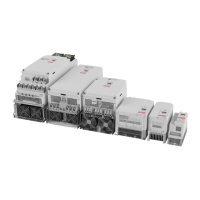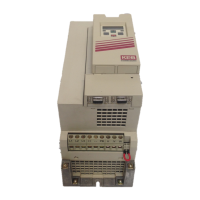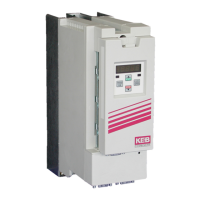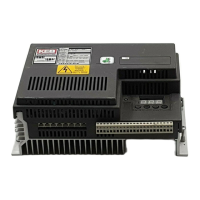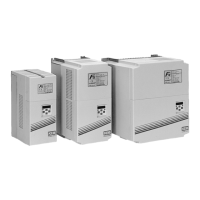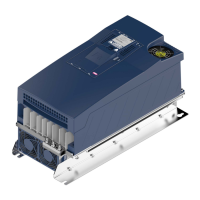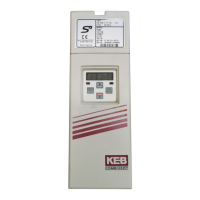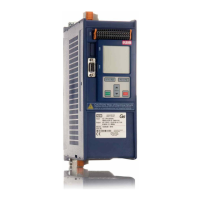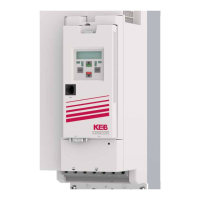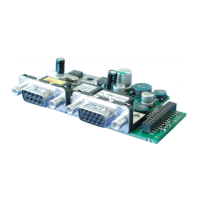6 13
KEB COMBIVERT F5
4
Name: Basis
04.05.04
Chapter Section Page Date
© KEB Antriebstechnik, 2002
All rights reserved
Functional Description CP-Parameter Definition
6.13.2 Assignment of
CP-Parameters
ud.16 determine the parameter address (see Chapter 5) of the parameter to be displayed:
ud.16
-1: Parameter not used
0...32767: Parameter address
ud.17 determine the set, the addressing and the standardization of the parameter to be
displayed. The parameter is bit-coded. The individual bits are decoded as follows:
Bit 0...7 determines the set selection for direct set programming, i.e. all selected sets
contain the same value, which is defined by the CP-parameter. If direct set programming
(bit 8, 9) is selected at least one set must be selected as otherwise an error message is
triggered in the cp mode.
CP address (ud.16)
Determination of
parameter set for indirect
set addressing
Bit
76543210ValueSet
0 0 0 0 0 0 0 0 0 none
00000001 1 0
00000010 2 1
00000011 3 0+1
... ... ...
11111111 255 All
Determination of set
addressing mode
Bit 8 and 9 determine the set addressing mode:
Bit
8 9 Value Function
0 0 0 Direct set addressing; the sets determined by Bit 0...7 are valid
0 1 256 Current set; the current set is displayed / edited
1 0 512 Indirect set addressing, the parameter set determined with the set pointer
Fr.9 is displayed / edited
1 1 768 free
Display standardization Bit 10...12 determine how the defined parameter value is displayed. Up to seven different
user standardizations (see further on in this chapter) can be determined with the parameters
ud.18...21.
Bit
12 11 10 Value Function
0 0 0 0 Use standard standardization of the parameter
0 0 1 1024 Display standardization from set 1
0 1 0 2048 Display standardization from set 2
... ...
1 1 1 7168 Display standardization from set 7
CP set norm (ud.17)
CP selector (ud.15)
With ud.15 the CP-parameter to be programmed is adjusted in the range of 1...36. CP.0 is
not adjustable.
Invalid or not exists parameter
addresses are ignored with „Data
invalid“.
-> Data invalid, if Bit 8 and 9 = 0
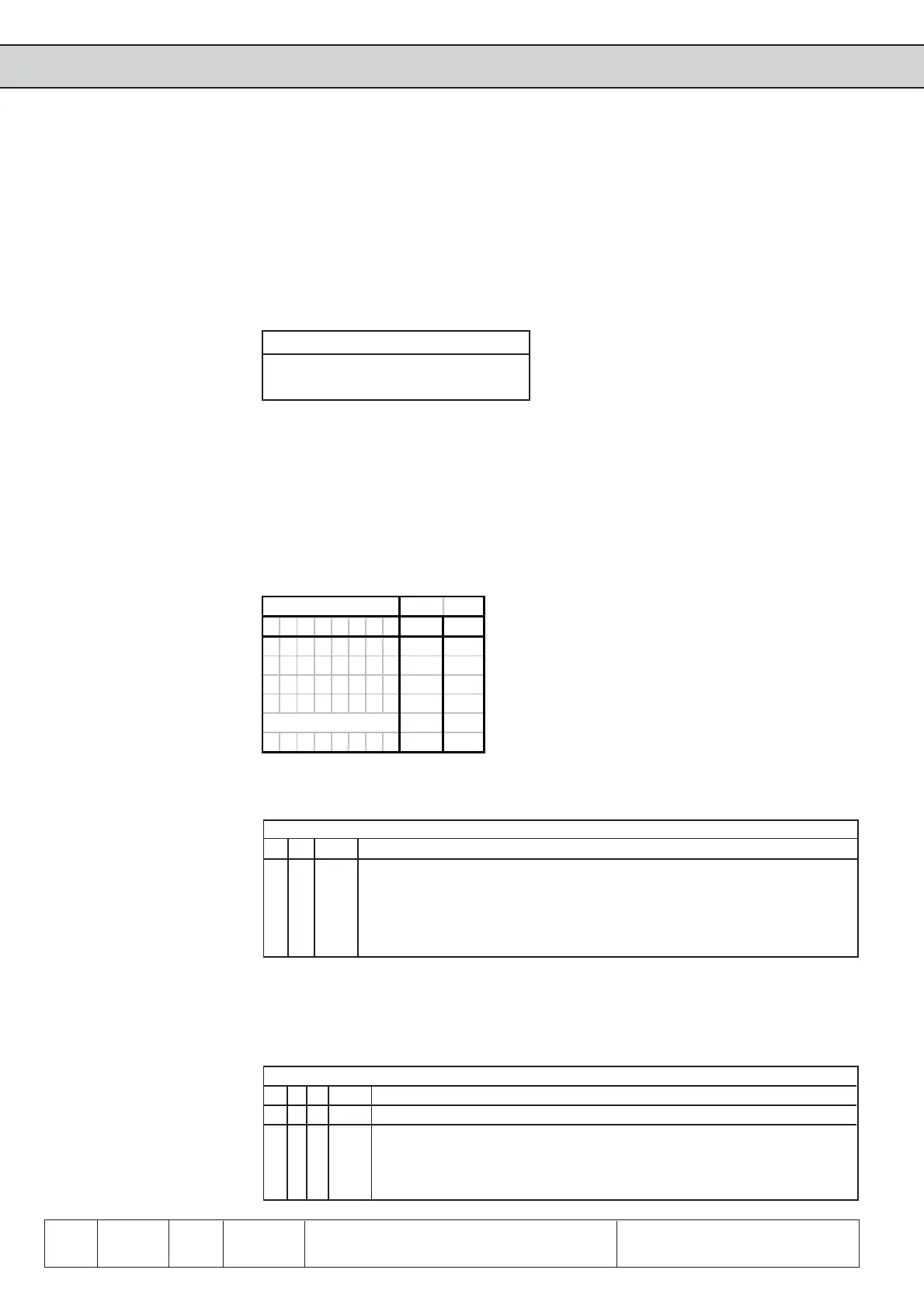